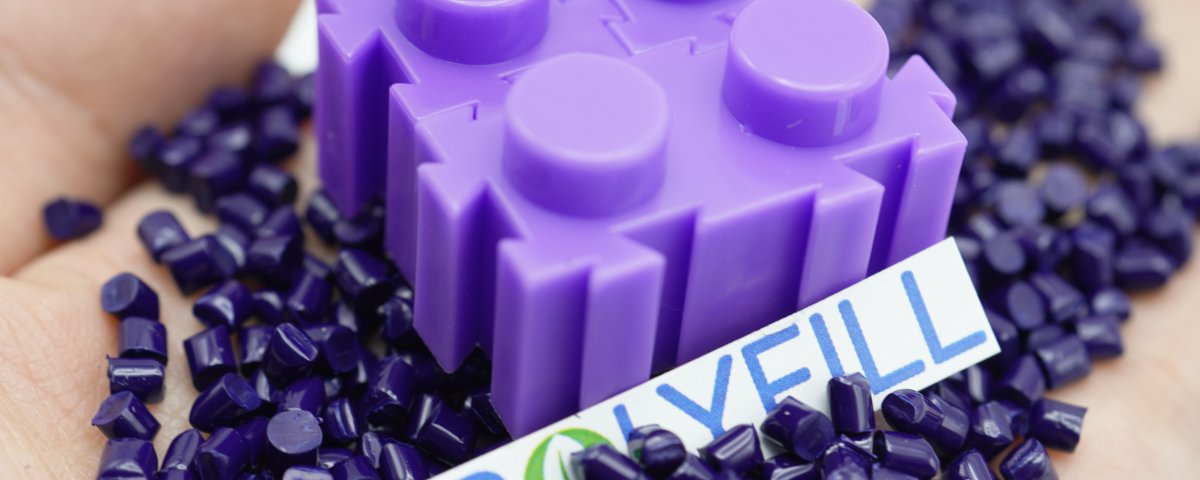The use of coloring methods offers various benefits to end-products such as value addition, mechanical properties improvements, better endurability,… In this article, let’s dive into the characteristics of each type of colorant and find out which suits you best!
As demands for plastic products are getting more diverse and complicated than ever, it’s extremely important for manufacturers to have their products equipped with colorants. The question is which type of colorant suits your products best? Here are the top 4 most frequently used coloring methods in the plastic industry.
4 most common coloring methods
In case you may not know, there is more than a type of colorant. To be exact, we have 4 coloring methods that are commonly used across different industries.
Pigments
Pigments are solid and dry coloring substances that come in powdered form.
Pros: An outstanding advantage of this coloring method is its cost-effectiveness and various color choices, which easily meet end-products’ requirements.
Cons: As pigments are in powdered form, it may disperse unevenly on the products’ surfaces. Plus, the nature of pigment makes it harder to be managed. Hence, there is a strong possibility that it causes aribone during the manufacturing process, which could result in contamination of adjacent manufacturing lines.
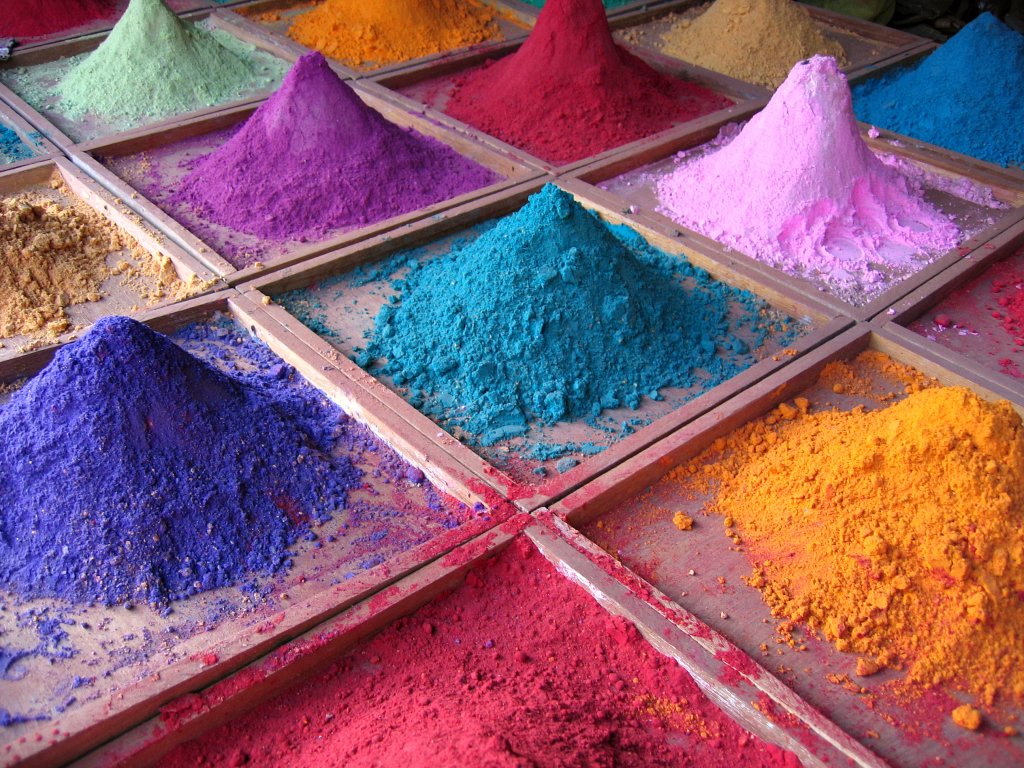
Related: Plastic color masterbatch & pigments – Which one is better?
Cube blends (Salt and pepper mixes)
Cube blends are the combination between a dry masterbatch and a natural polymer. This coloring method is normally conducted in the absence of metering equipment at the press.
Pros: The use of cube blends allows users to have precise control over the final output with the lack of equipment. Plus, polymer involved in the cube blends has remained solid, which helps them preserve original properties.
Cons: The biggest disadvantage of using cube blends is the possibility of color variations.
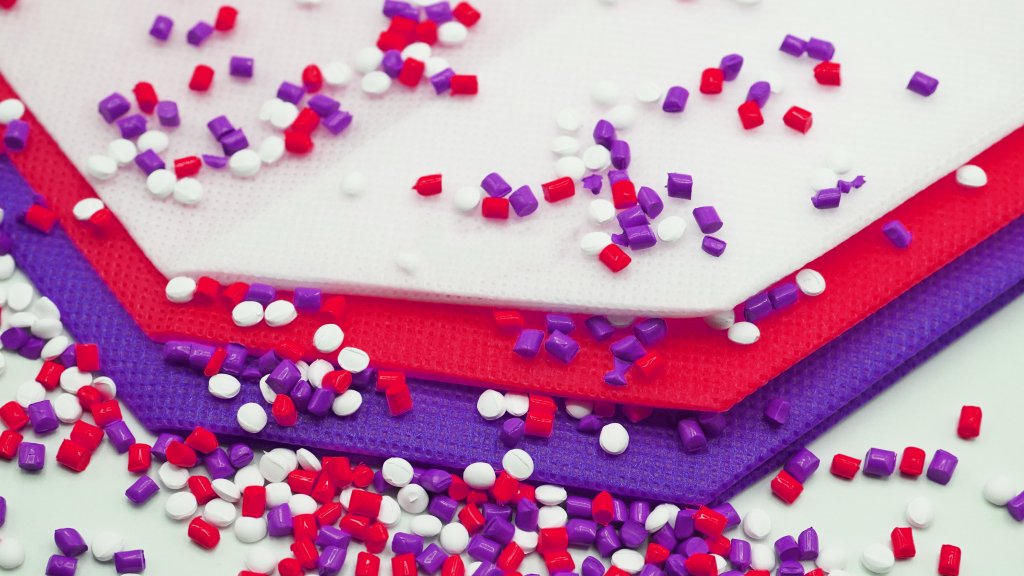
Precolored resin
Also known as compounds, precolored resin is a ready-to-use type of colorant. In which, pigments are completely polymerized into a resin package. After experiencing the process of mixing, melting and extruding, compounds can be directly used for creating end-products.
Pros: Precolored resin is prefered for its ease of use, excellent dispersion and consistent properties as required colorants have already embedded into the resin.
Cons: The convenience comes at a high expense. Of all these coloring methods, precolored resin is the most expensive. As precolored resin requires a process of research and development to create the most fitted color, its price is much higher than the others. Thus, it is commonly used in high-tech industries such as household appliances manufacturing, automotive, electric industry,…
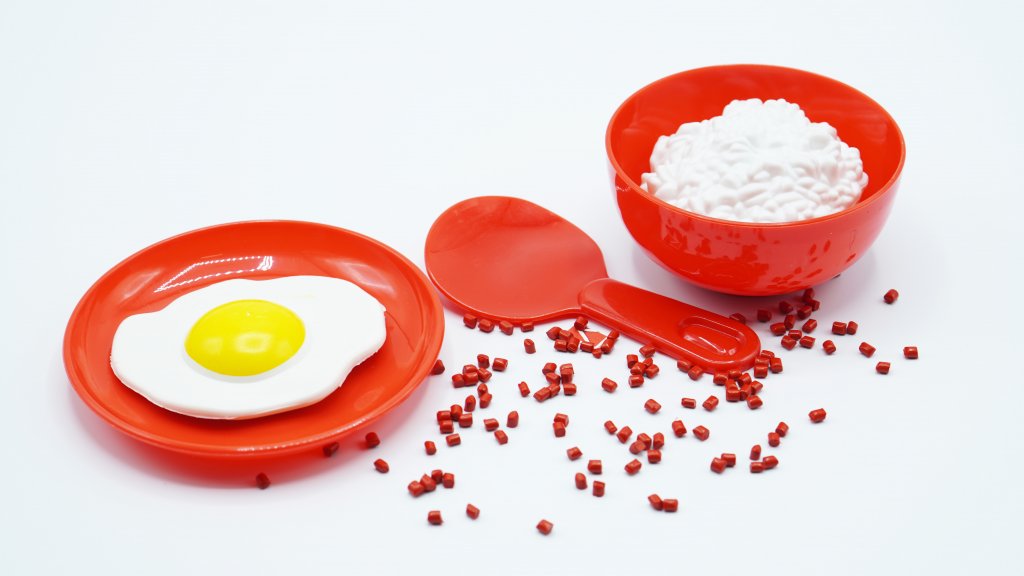
Color masterbatch
Color masterbatch is created by pigments mixed with resins and other specific additives. After going through the thermal phase, it will be cooled down (in a water tank or under fans) and cut into small granules.
Pros: The biggest advantage of color masterbatch is definitely the great dispersion. Compared to pigments, color masterbatch disperses more evenly on the products’ surface as it includes resin that’s been already used in end-products, thus enabling the durable color fastness. The addition of other additives also improves end-products mechanical properties such as UV resistance, abrasion resistance,… In particular, color masterbatch is more affordable than compounds, making it the top-of-mind when it comes to coloring methods.
Cons: Like compound, the use of color masterbatch requires a mindful consideration regarding formula, loading rate and other manufacturing index,… to achieve the best result, or else it may result in the poor dispersion on the end-products’ surface.
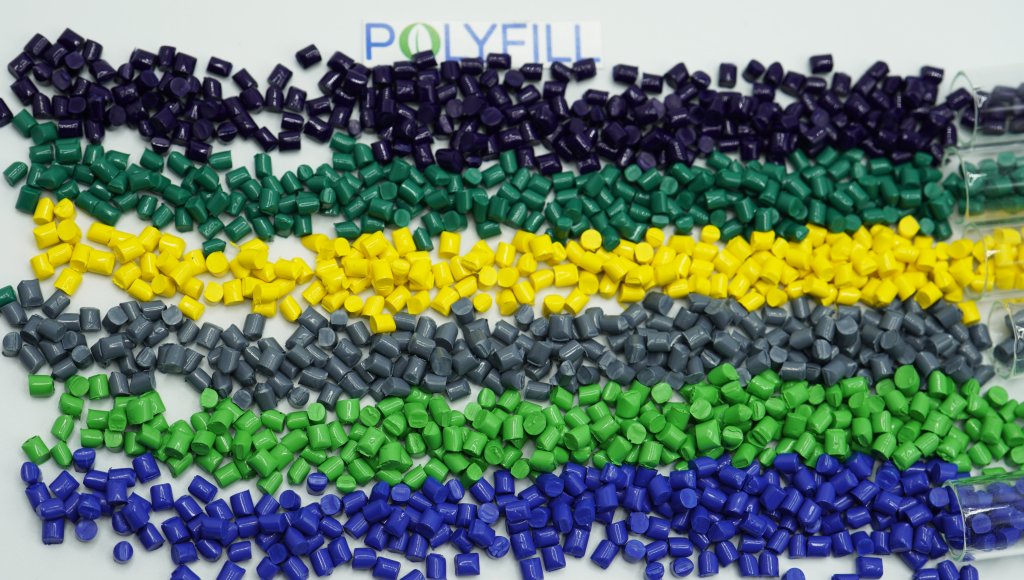
Thanks to these outstanding advantages, it is not surprising that color masterbatch is the most frequently used plastic colorant. According to ResearchAndMarkets.com, the masterbatch market size is projected to reach USD 14.3 billion by 2025, at a CAGR of 5.1% between 2020 and 2025. In which, color masterbatch is the largest type for masterbatch (in 2019).
Related: Color masterbatch for brightening injection moulding products
Classification of color masterbatch and its applications
Color masterbatch provides manufactures with various color choices based on your requirements. Here are some most commonly used products that you may not want to miss.
White masterbatch
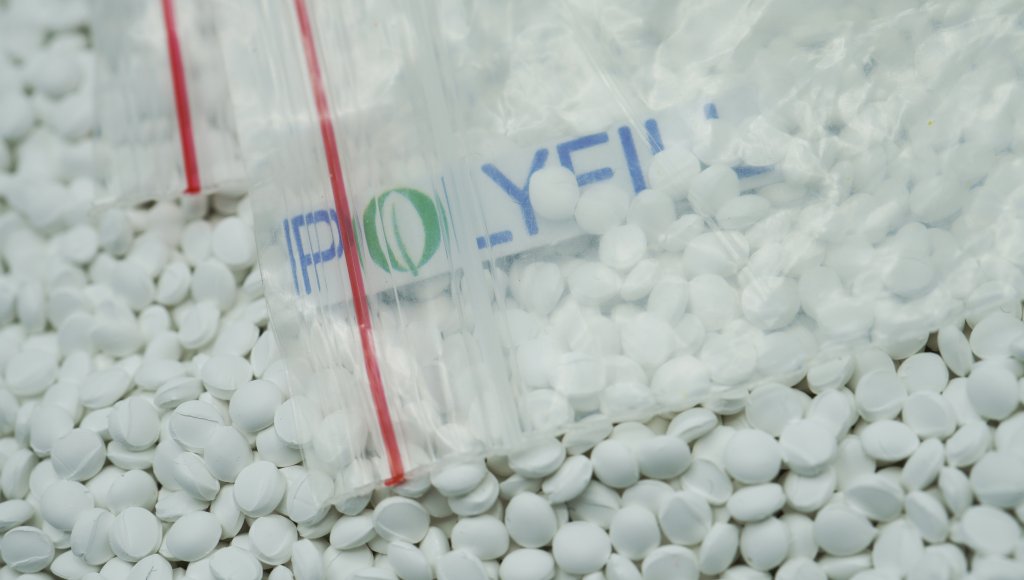
White masterbatch is the largest sector of color masterbatch with 29.13% market share in 016 (reported by Statista). Being made of titanium dioxide (TiO2), plastic resin and specific additives, it offers end-products a high level of whiteness and brightness. Moreover, as TiO2 is a good anti UV substance, white masterbatch can significantly improve plastic’s UV resistance ability, thus making end-products more durable and long lasting.
Thanks to its great whiteness, white masterbatch is used in several applications such as packaging films (food wrappers, shopping bags, food containers,…), household appliances, plastic bottles, straws, pipes, bars,…
Related: All about plastic filler white: Components, benefits and applications
Black masterbatch
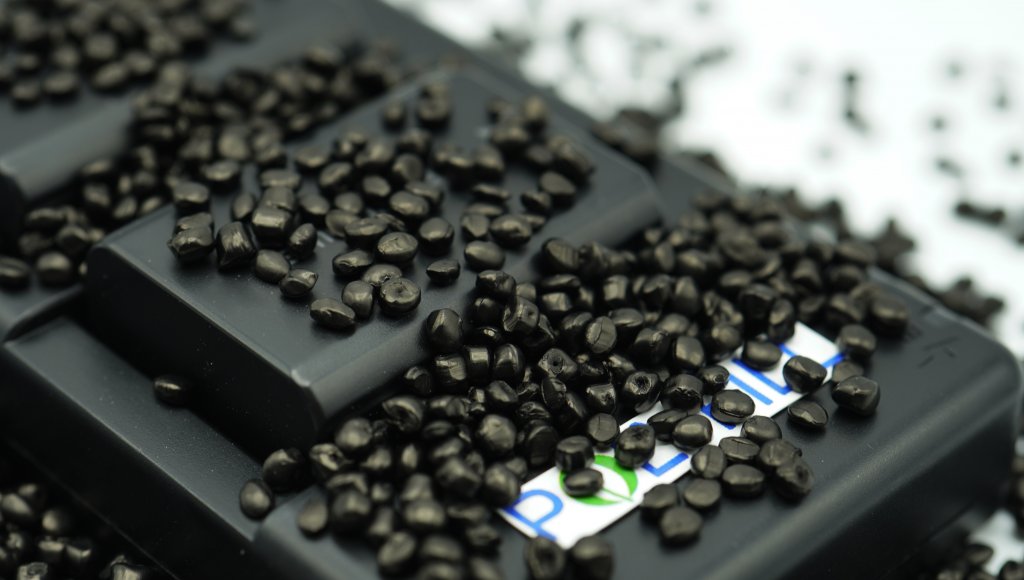
Black masterbatch is a combination of carbon black pigments, plastic resin and other specific additives. Like white masterbatch, it offers end-products a great dispersion, superior color fastness and excellent thermal endurability. Hence, black masterbatch is specifically preferred in extrusion (water pipe, cable sheathing articles, dripping irrigation pipes,…), blown film (silage wrap films, garbage bags,…), injection moulding (mechanical equipment,…),…
Other types of color masterbatch
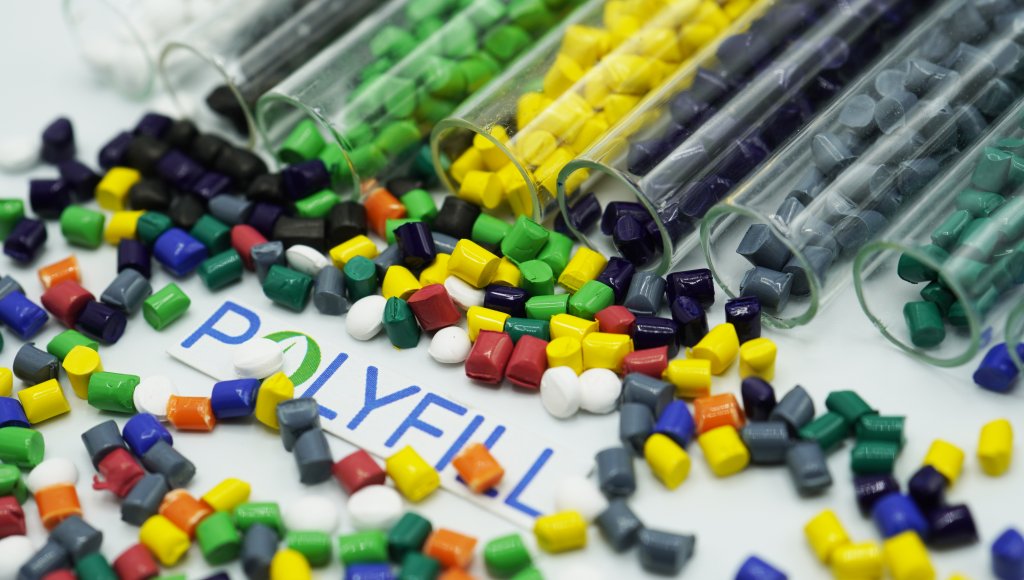
Not only black and white, color masterbatches are also available in various colors such as yellow, green, blue, red,… In particular, it provides manufacturers with specific effects such as metallic, pearly, transparent, edge glow, marble, glitter effect,… to fulfill specific requirements of end-products.
Notes on the use of color masterbatch
There are a few tips for manufacturers to achieve the best result when using color masterbatch.
In the manufacturing process, the mixing chamber of an injection moulding machine or extruder generally has several temperature zones, and the temperature near the outlet should be slightly higher. This is to accelerate the masterbatch melting process. Secondly, a proper back pressure can be applied in the injection moulding machine to improve the mixing effect of screw and disperse pigments. However, it may slow down the injection moulding speed. Thirdly, products’ brightness can be increased by properly increasing the die temperature of the extruder.
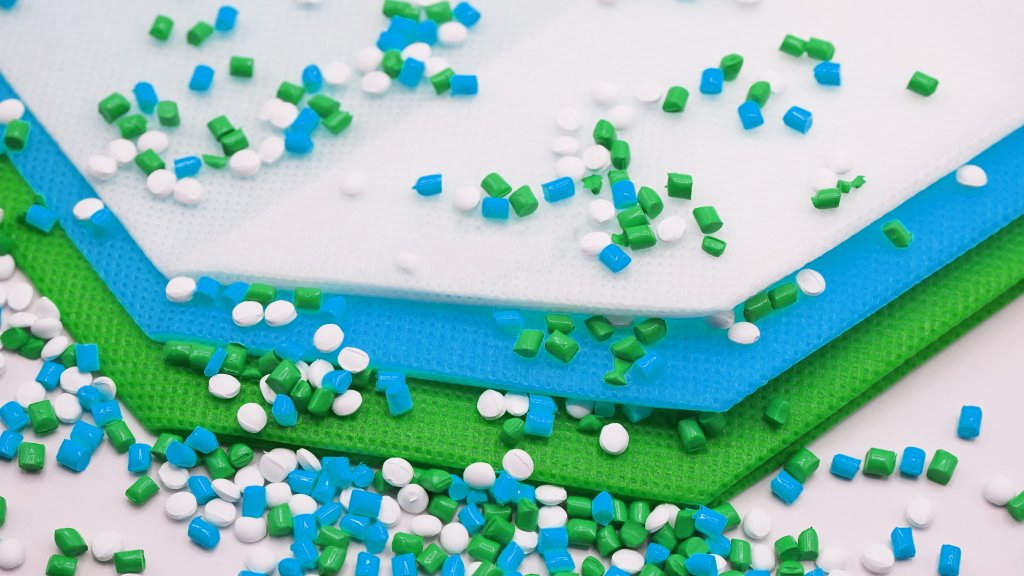
Normally, 1:50 is used for colouring plastics products with general requirements, PE filler and PP filler masterbatches use this ratio more frequently.
1:33-1:25 is used for PO products with higher dyeing requirements, and for ABS products with lower dyeing requirements.
1:20 is used for advanced plastic products, including PO and ABS. It can be widely used in injection moulding, blow moulding, spinning and other processes.
More than 1:20 is generally used for coloring of high-grade cosmetic containers and more for small injection moulding machines.
PolyFill color masterbatch
As one of the leading masterbatch manufacturers, PolyFill takes pride in providing customers with excellent quality color masterbatches. Being made of high quality pigments, proper resins and specific additives, PolyFill color masterbatches offer end-products a great dispersion and multiple added values such as thermal resistance,… Most importantly, all of them are customized based on customers’ requirements to exactly suit your end-products.
Thanks to these advantages, our color masterbatches have been now applied in a wide range of industries such as blown film, extrusion, injection moulding, lamination,…
For further details and consultation, do not hesitate to contact us HERE!

